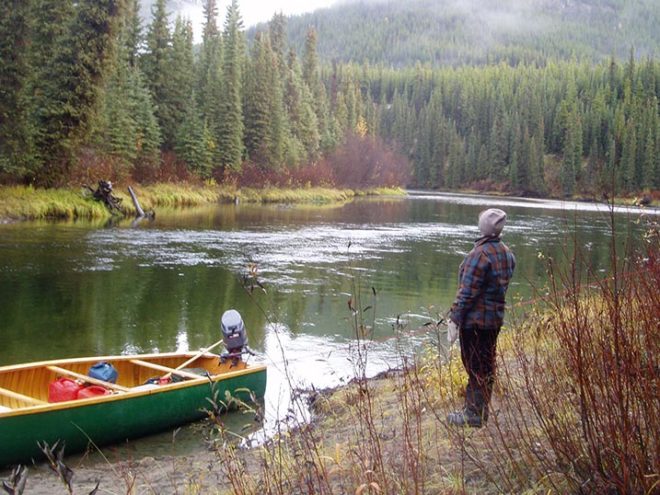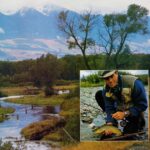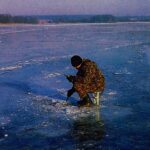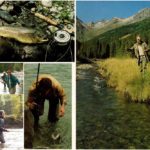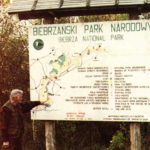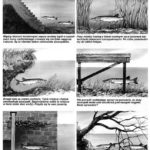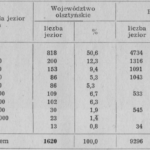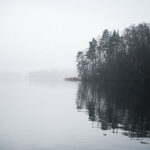Złoto, złoto. Nad rzeką Klondike wiadomość ta obiegła chyba wszystkie zakątki Ameryki Północnej. Przed przeszło wiekiem tutaj właśnie w okolicach Dawson wybuchła gorączka złota. Tysiące nowo przybywających ludzi oblegało brzegi Yukonu. Każdy przybywał tutaj z nadzieją na lepsze jutro. Dla większości gorączka złota stała się koszmarem, symbolem zła i niespełnionych marzeń. Dla kilkuset poszukiwaczy „Klondike River” podarowała swoje skarby, stała się dla nich „Świętą Rzeką” i była ich eldoradem. Dzisiaj – po ponad stuletniej działalności człowieka – krajobraz jest niemalże księżycowy.
Przekopane góry ziemi, wypłukane miliony ton złotonośnego piasku, w niektórych miejscach góry przepłukanych kamieni wcale nie są mniejsze od górniczych hałd na Śląsku. Mimo że o gorączce złota już dawno zapomniano, to jednak okolice Dawson są nadal eldoradem i to nie tylko dla przemysłu turystycznego, ale także dla wędkarzy i myśliwych…
Co można jeszcze wymagać od życia? Marzeniem moich chłopięcych lat była rzeka Yukon. Motorem napędowym był Jack London i jego „Biały kieł”. Stoję teraz nad brzegiem tej pięknej i wielkiej rzeki. Spotkane tutaj krajobrazy pasują z wyobraźnią moich młodzieńczych lat. W okolicach Dawson góry są łagodne i bardzo przypominają Bieszczady. Góry całe w zieleni, a łagodne zbocza są porośnięte dziesiątkami gatunków różnokolorowych kwiatków. Często się zdarza, że przez ścieżkę przebiegnie niedźwiedź, widać przechodzące dolinami łosie i renifery. Nocami wyjące wilki i kojoty przerywają ciszę, a rankami bobry budują swoje wodne tamy. Yukon Territory jest bardziej dziki i naturalny od sąsiedniej Alaski, może i przez to, że mniej tutaj dróg i ludzi.
Yukon w sierpniu niesie mętną wodę, a to na skutek niskich stanów wody i wypłukującej się gleby. Większość ryb w takich okresach przenosi się do czystych wód jeziornych lub do czystych rzek lodowcowych. Wstępujące do Yukonu łososie mają do pokonania 3000 km, aby osiągnąć swe miejsca tarłowe. Taka wędrówka to duży wysiłek kosztujący ryby czas i energię. Łososie w swojej wędrówce w górę Yukonu w pewnych etapach swej drogi wpływają do czystych rzek lodowcowych w celu krótkiego odpoczynku i przede wszystkim, aby oczyścić swoje skrzela. Do Yukonu wstępują łososie: king salmon, red salmon, pink salmon, chum salmon, co-ho salmon. Pozostały rybostan Yukon Territory przedstawia się następująco: lake trout (ang.) -(Salvelinus namaycush) – jest to pstrąg jeziorowy, dolly varden (ang.) – (Salvelinus malma) – rodzaj pstrąga, arctic charr (ang.) – (Salvelinus alpinus) -saibling polarny, rainbow trout (ang.) – (Salmo gairdneri) -pstrąg tęczowy, northen pike (ang.) – (Esox lucius) – szczupak, arctic grayling (ang.) -(Thymallus arcticus) – lipień arktyczny, lake whitefish (ang.) -(Coregonus clupeaformis) -sieja jeziorowa, inconnu – (Stenodus leucichthys) – innconnu, least cisco (ang.) – (Coregonus lavaretus) – to chyba jest odpowiednik naszej sielawy, burbot (ang.) – (Lota lota) – miętus.
